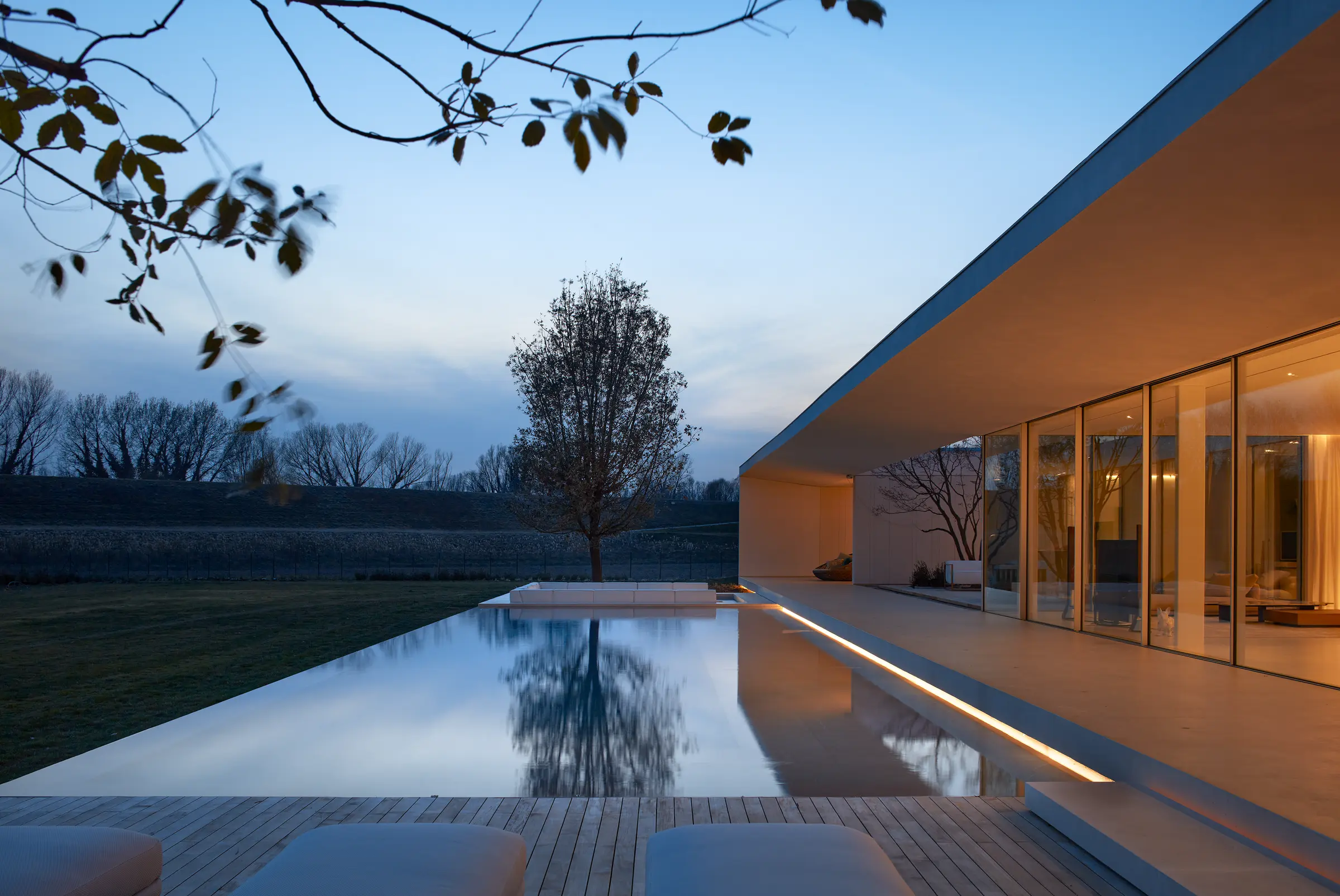June 2025
Reference
Tinderbox


Located in the Italian Pianura Padana, on the outskirts of a village surrounded by open space and facing a river, the one-story villa seeks maximum integration with landscape and environment blending in with the vegetation and maximizing the view of the river and southward-facing orientation.
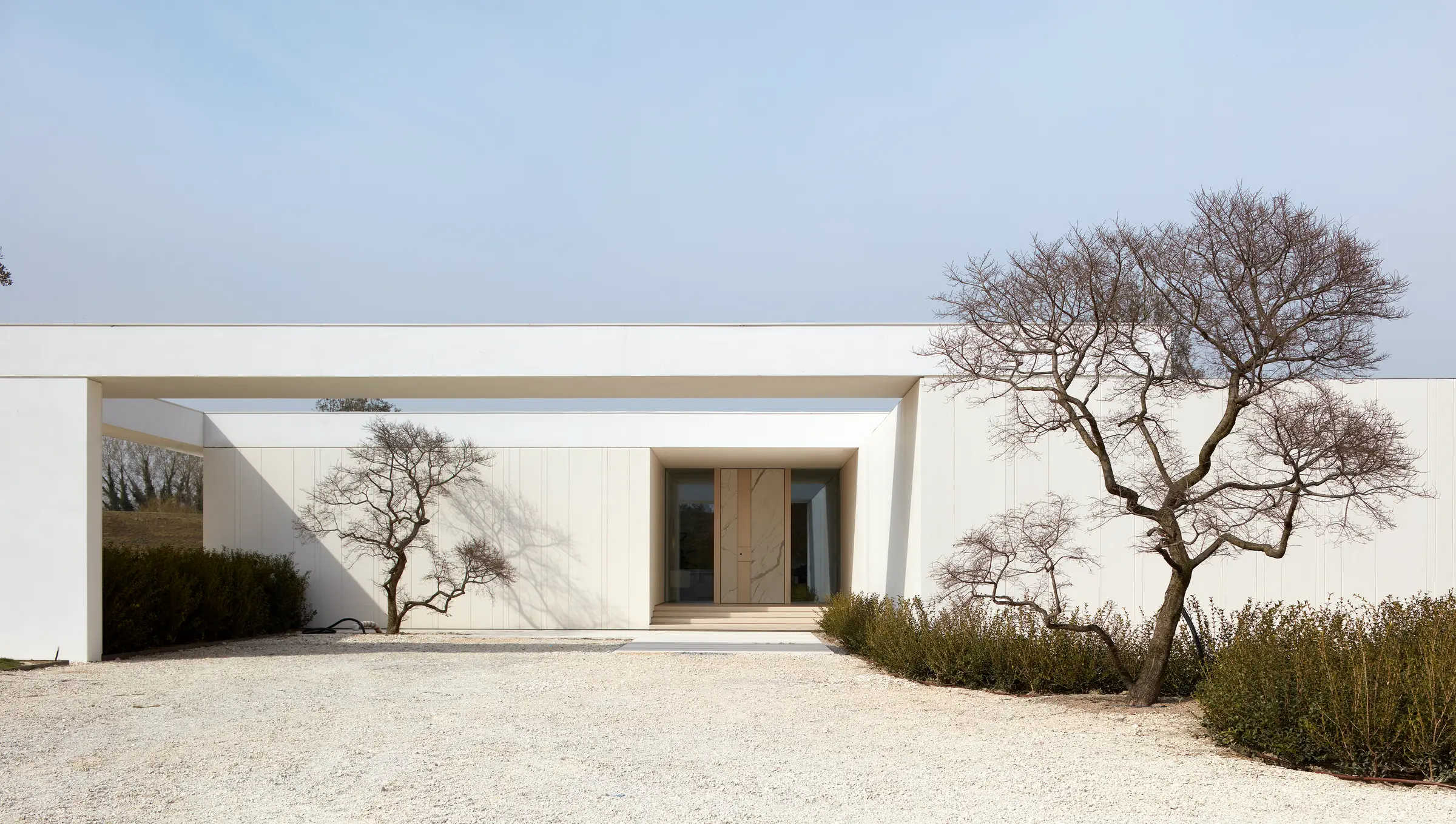
Villa Orizzonte is discreetly inserted at the edge of a generous plot respecting the footprint of a rural two-story traditional house that was demolished and it is a radical exercise in horizontality – in fact, its presence is most strongly felt in the footprint rather than volumetrically. An extensive line in an open landscape facing the river.
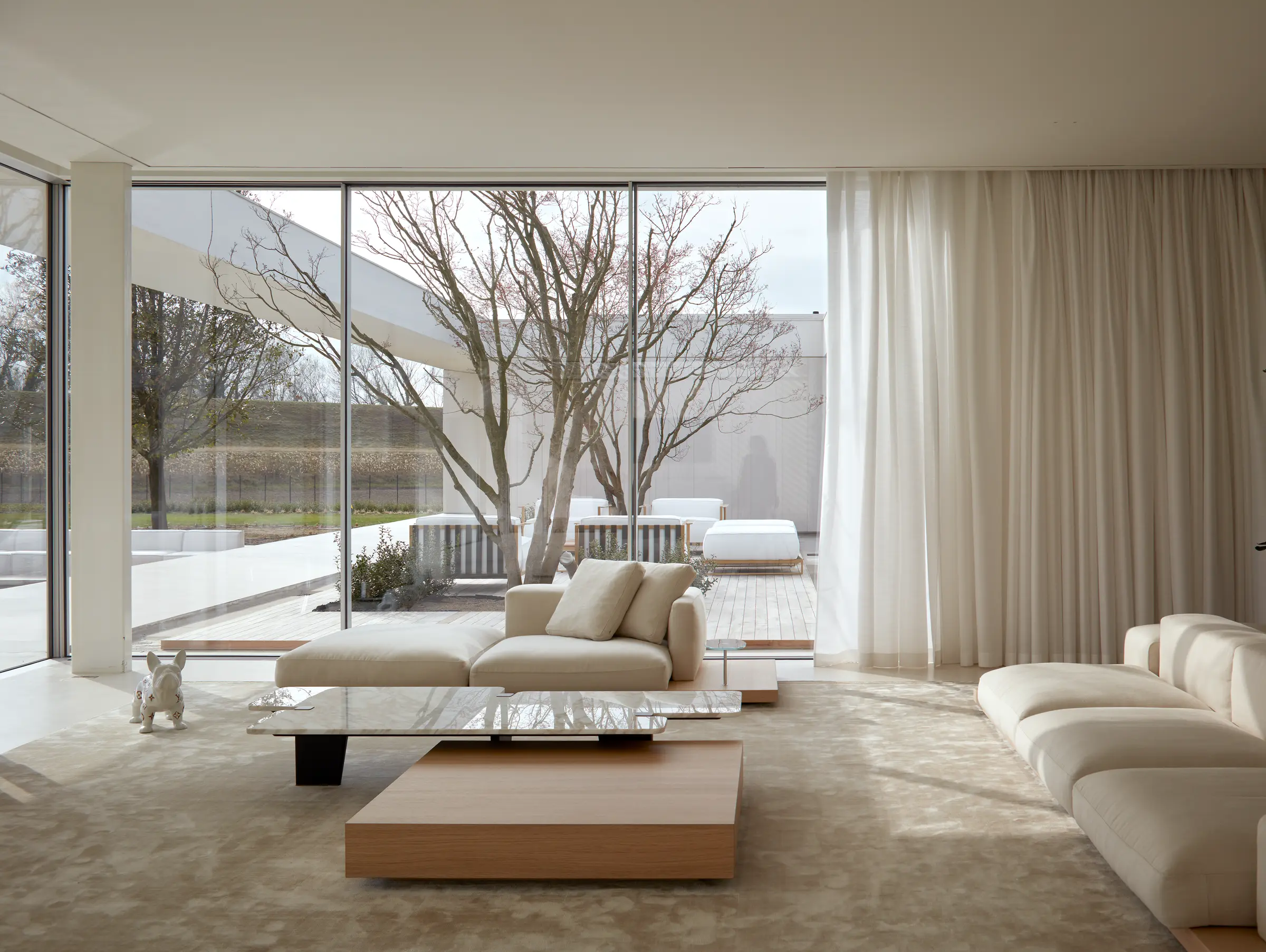
This type of insertion on the plot demanded care and attention with the design of the rooftop, which is the fifth facade of the building. This was an exercise in composition and selection of equipment to be placed there, such as solar panels and skylights.
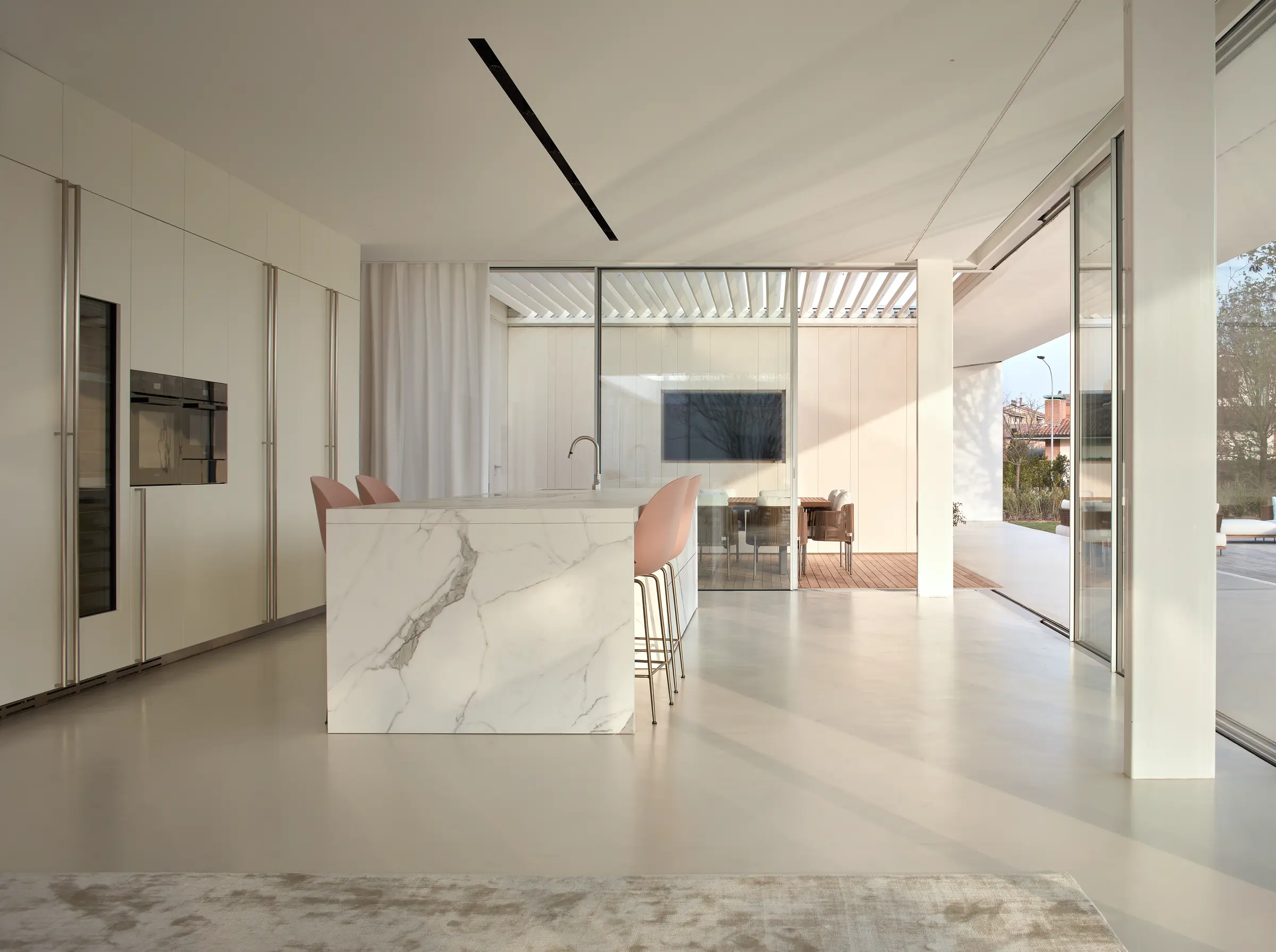
Under the roof there are two programmatic boxes, the first one heavier and completely stone-cladded, containing the service areas, garage and a small office; the second one containing the living rooms/kitchen in the middle and the three en-suite bedrooms at the extremities, with an open ambience thanks to the sliding glass doors that transforming the entire house into a terrace.
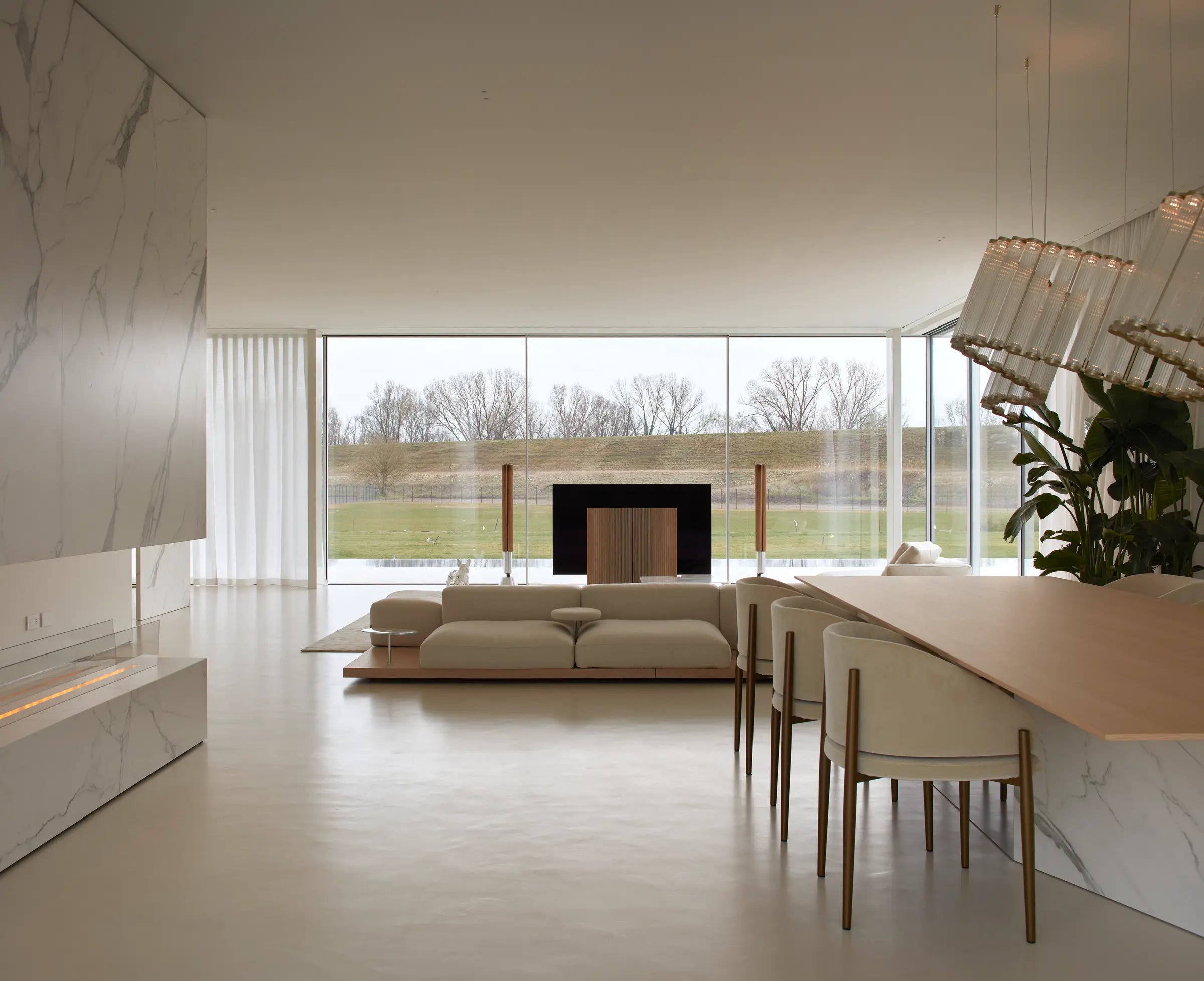
The roof is the unifying element of all the spaces, designed with a void to create indoor/outdoor spaces blending in with the vegetation and letting the light come through.
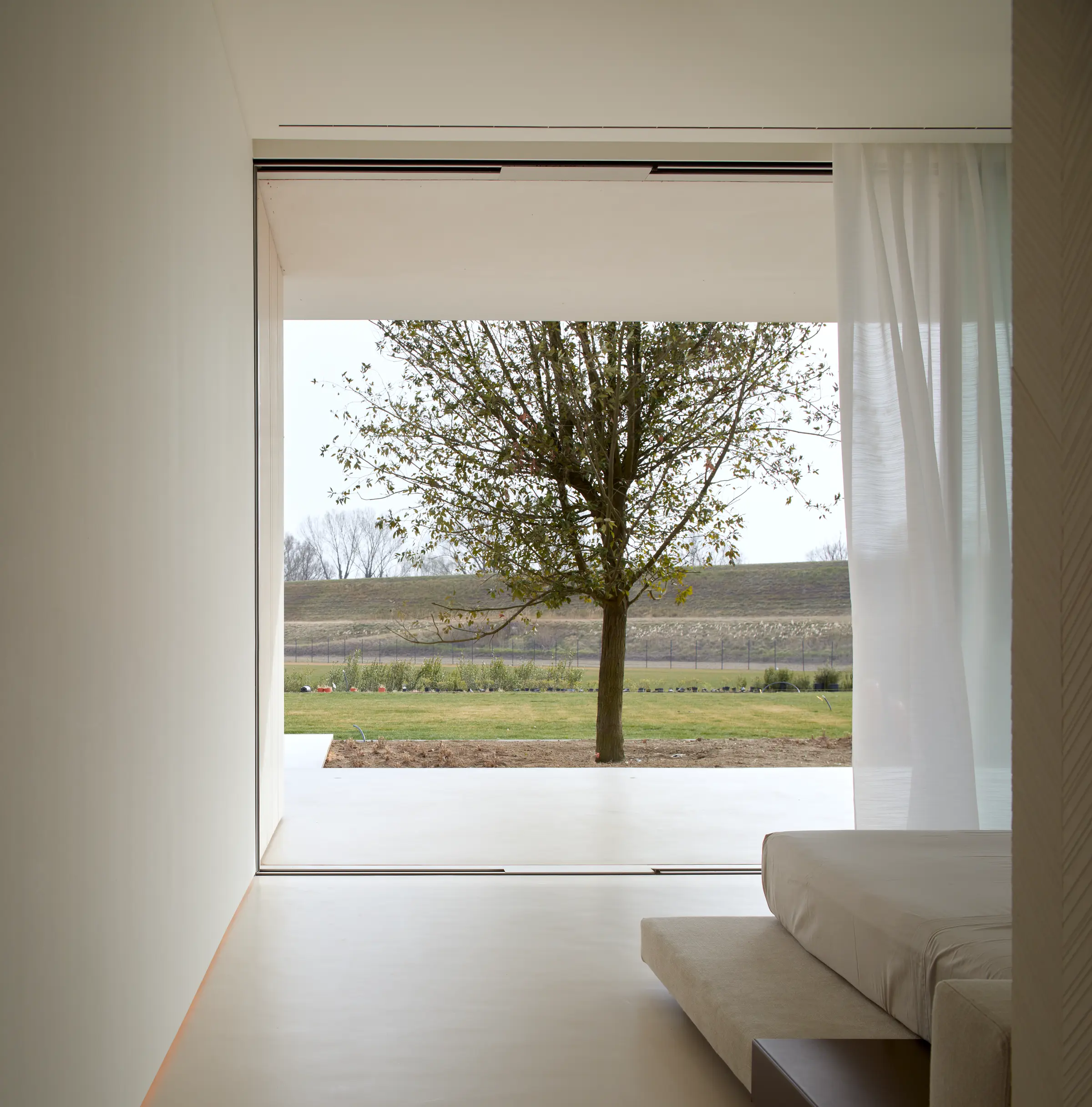
The roof is pierced by several perforations highlighted with different aims: the first one, a large entrance courtyard gives access to the house like a Roman atrium, the second one organizes and give privacy to the rooms and sunlight to two Japanese acer trees that shield the rooms and filter sunlight though their deciduous leaves in each season. The third opening is a private patio for the master suite that acts as an outdoor extension of its indoor areas and the fourth is a zenital skylight that gives light to the corridor.

These courtyards fulfil three different uses: generating an access, organizing the rooms and allowing for their visual connection. Entering the house becomes a changing, pleasant and harmonious promenade.
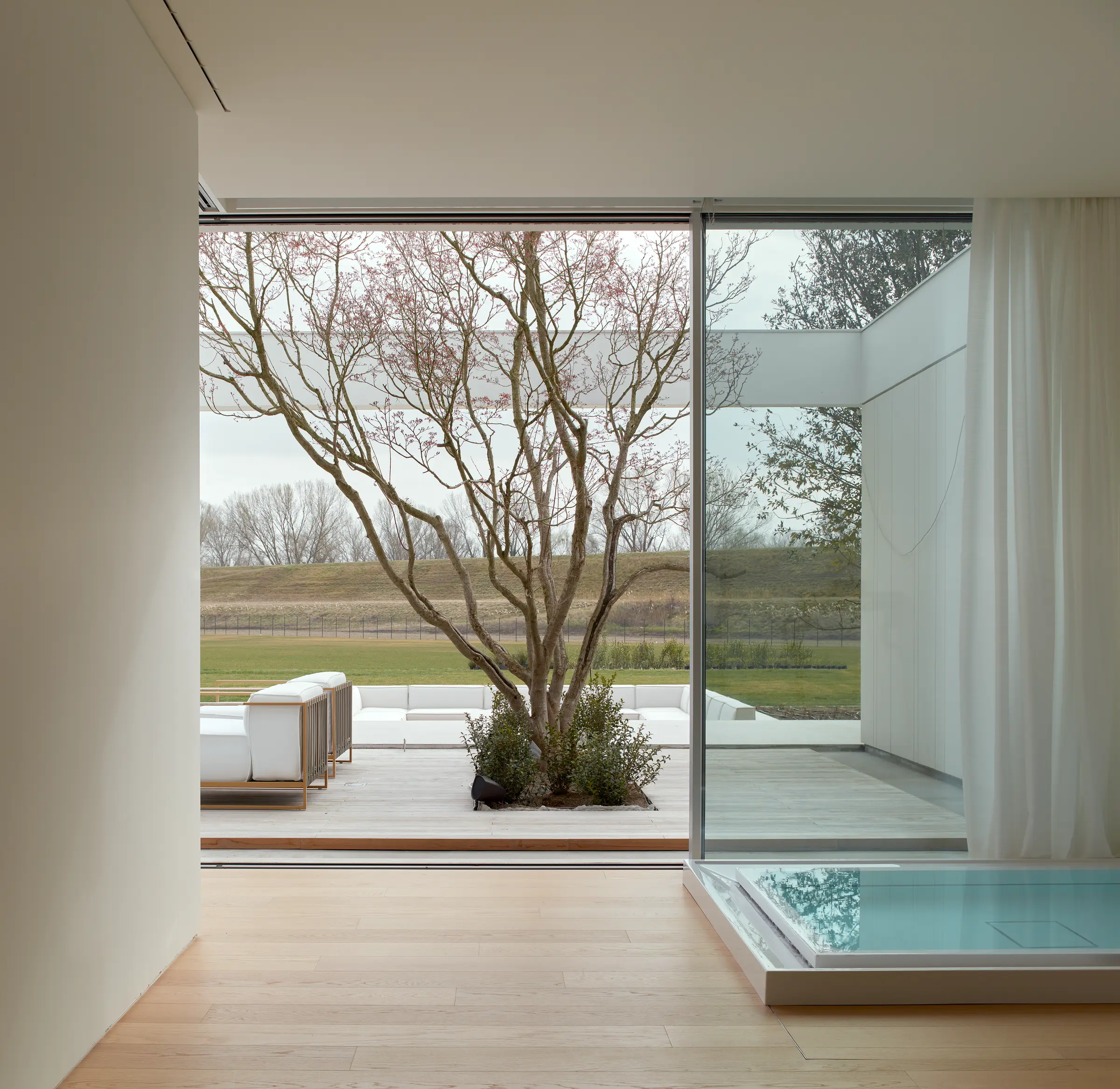
The indoor entrance and the living room is filtered through a generous marble-cladded fireplace hanging from the ceiling. Once you entered you discover all the public areas interconnected through the outdoor porch framing the extensive gardens and the pool.
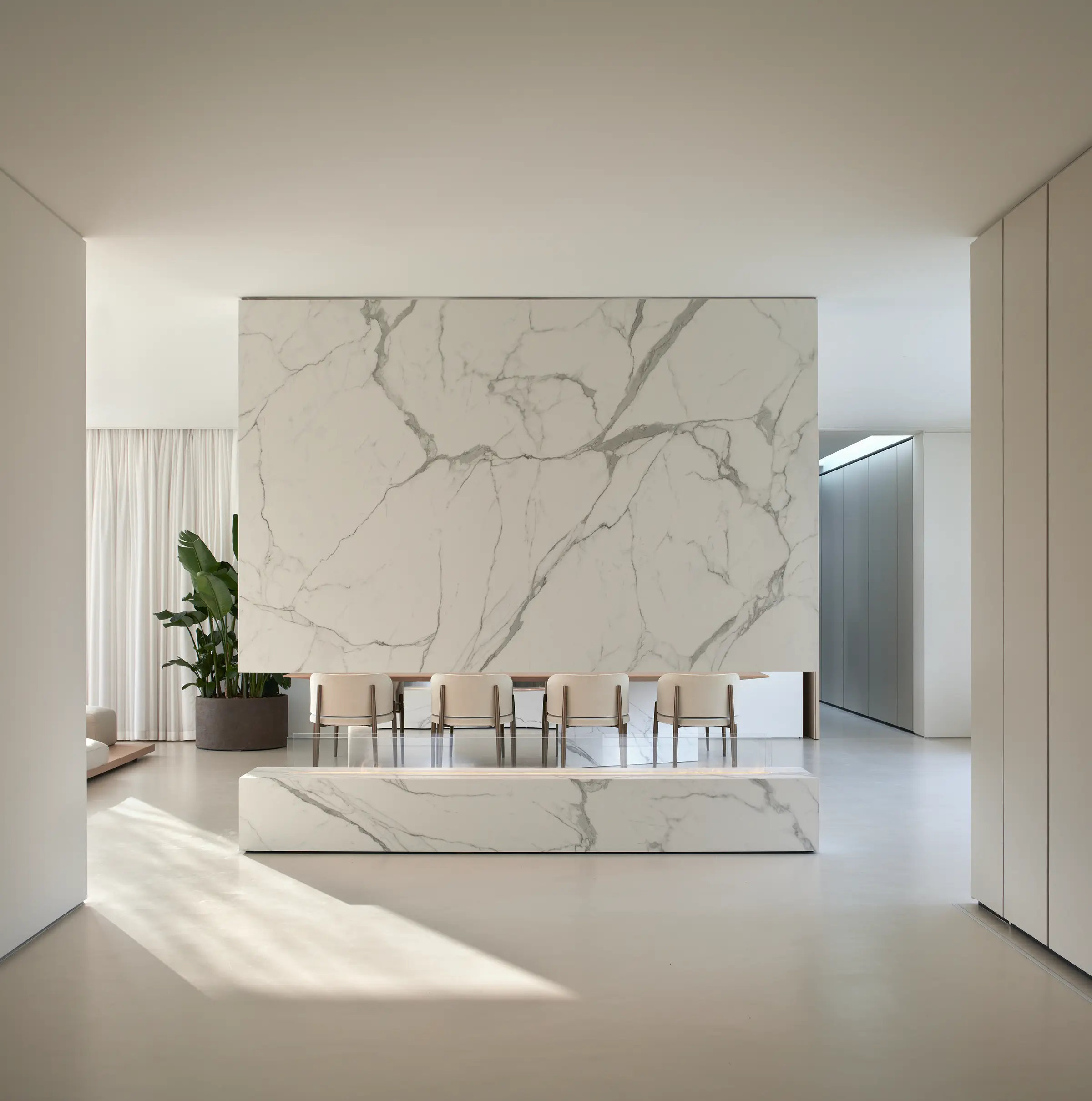
A large sheet of water highlights the porch and visually extends it by reflecting the internal façade of the house, the vegetation and the sky.

The furniture, such as the pass-through fireplace and low sofas and lounge spaces, allows the visual connections between adjacent rooms. The different areas of the house are also visually connected through the patios.
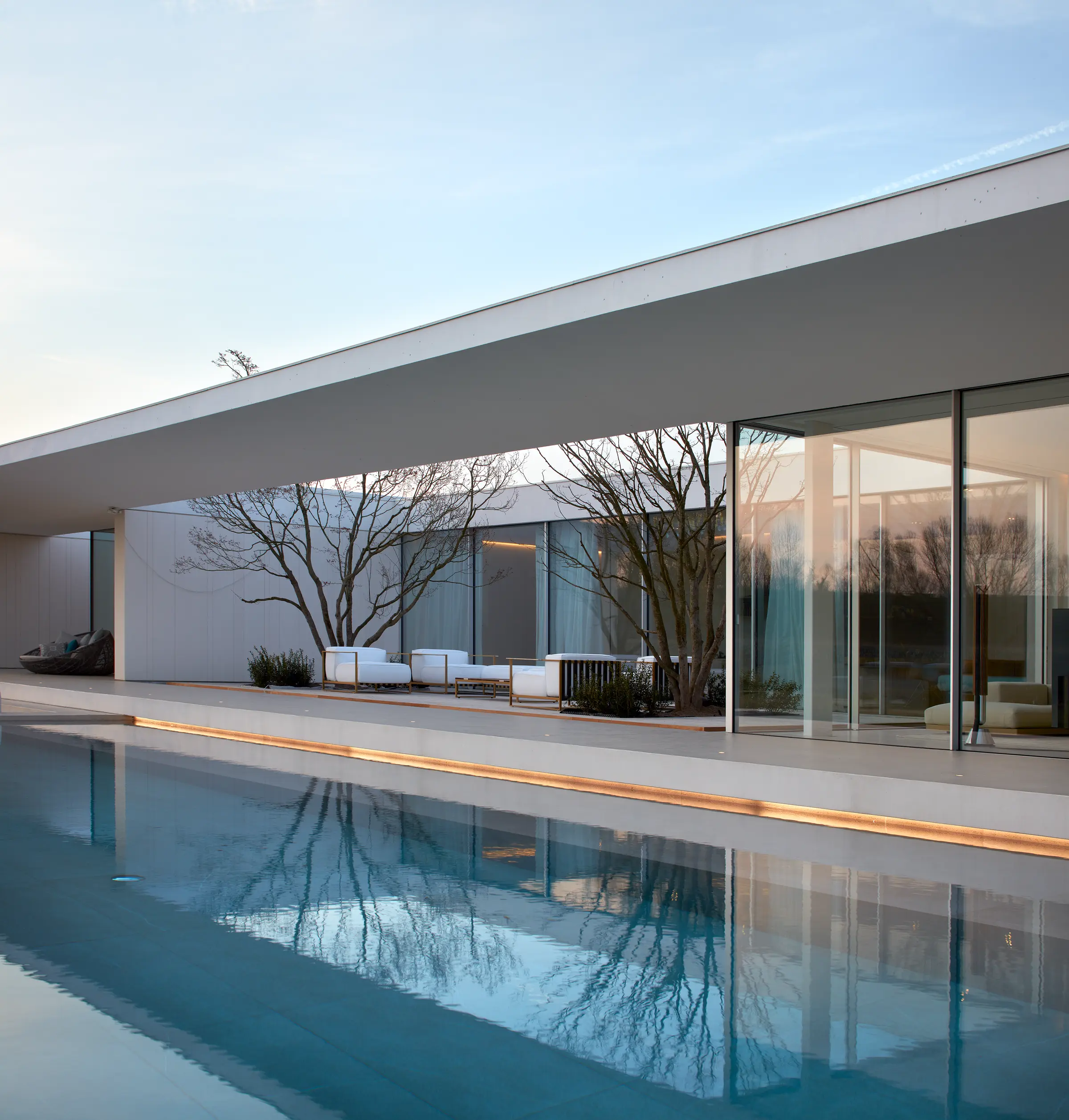
The sensation of fluidity is enhanced by the use of minimalistic window frames that are embedded into the walls, opening the house outwards and blurring its limits with the landscape.
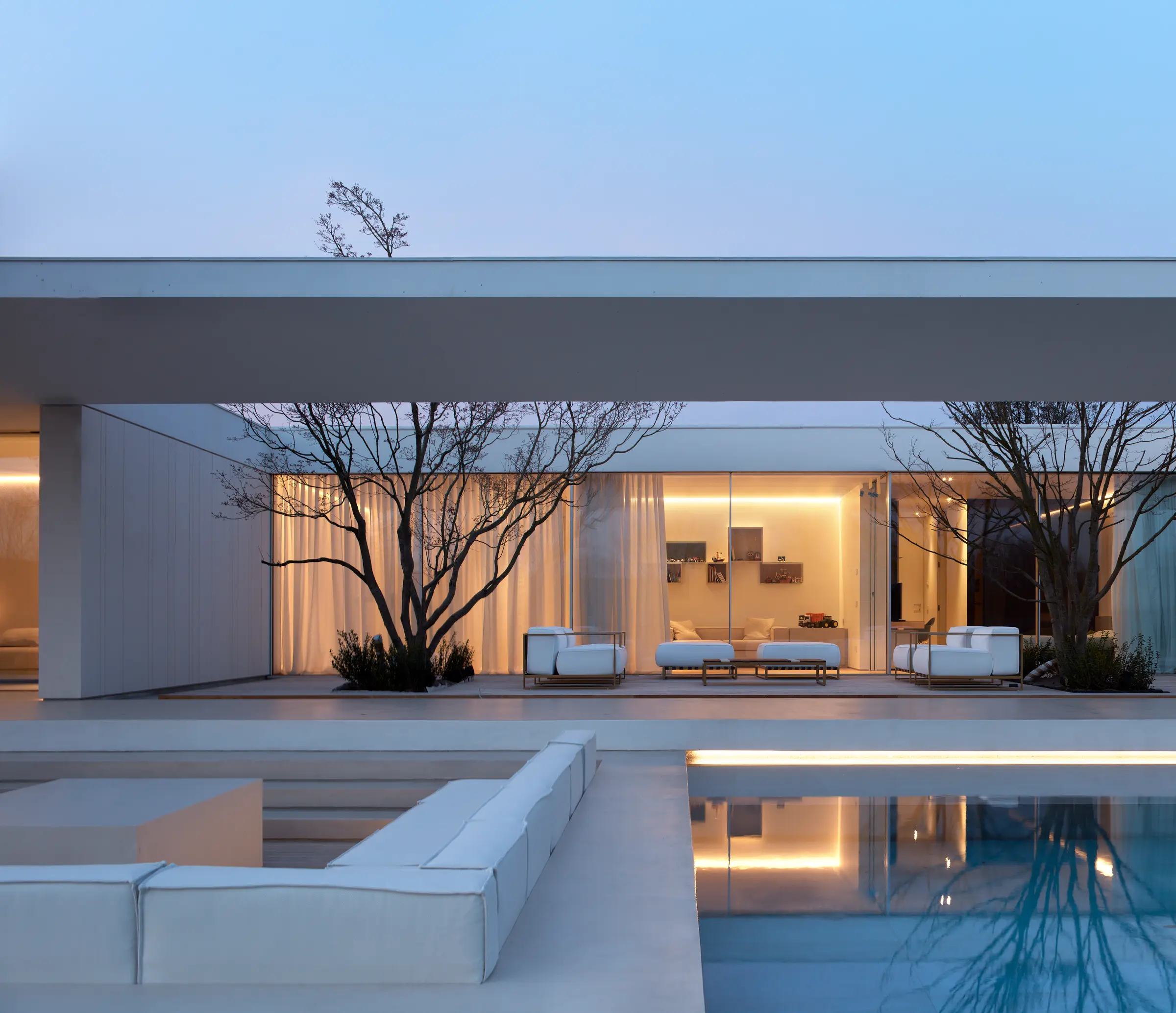
Water is used as another building material. The pool makes the space look wider and cools the environment. Each and every element, from the architecture that gives shape to the building to the smallest detail, follows the same philosophy and uses the same language.
